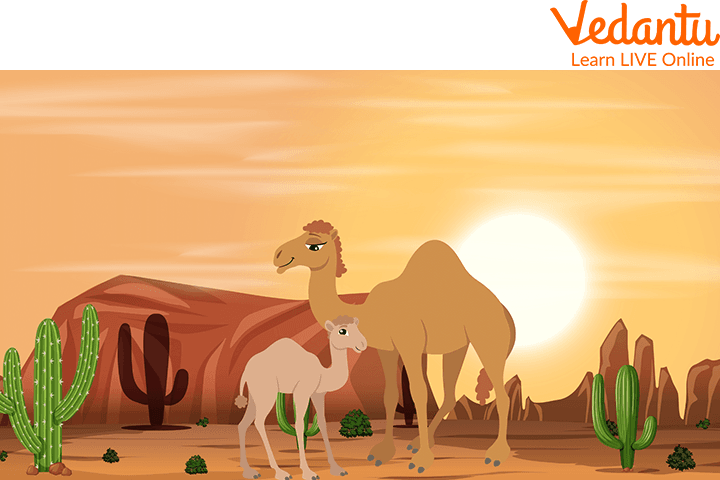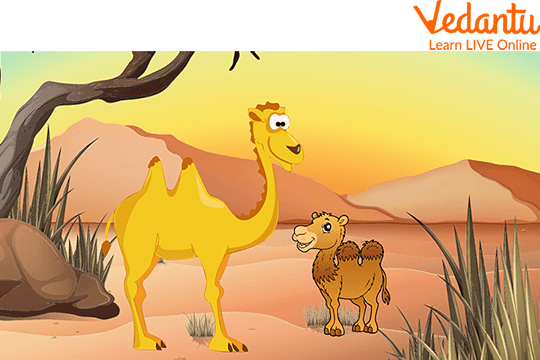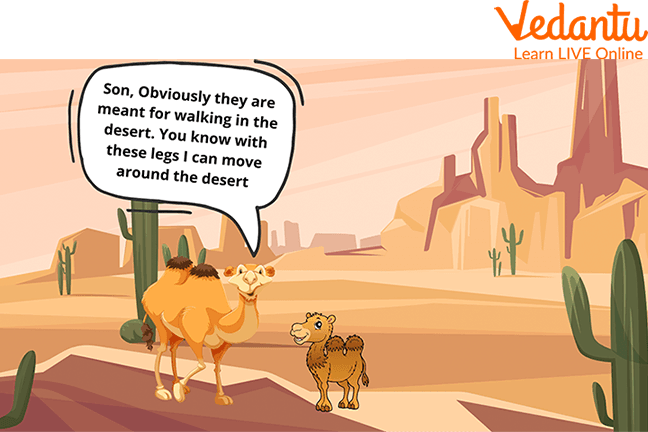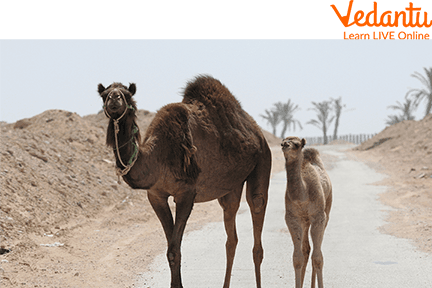Baby Camel and Mother Camel Stories

Introduction to Baby Camel and Mother Camel Stories
Animal stories for kids fascinate and spark the interest of their interested minds. You also must like animal stories. These stories have a lesson too in an interesting way. Storytelling can be used to educate children about several areas of life. While some messages are simple to understand, others are more complicated and cannot be provided directly. Ok so let's now read the story of the baby camel and its mother in this article.
Information About Camel
More than 3,000 years before, camels were domesticated. They are employed by humans for various reasons, but most often for journeys across arid climates. Camels can live for long periods without food or water. They can effortlessly carry an extra 100 kg and can walk about 20 km a day through the severe desert climate. Camels also give humans food (milk and meat) and clothes (fibre and felt from hair).
Baby Camel And Mother Story
One day mother and a baby camel were lying around, and unexpectedly the baby camel asked, “mother, may I ask you some concerns? The mother said, “Sure! Why son, is there something worrying you? Baby said, “Why do camels have humps?” The mother said, “Well son, we are desert animals, we need the humps to conserve water and we are recognized to survive without water”.

Baby Camel And Mother
Baby said, “Okay, then why are our legs long and our feet rounded?” The mother said, “Son, they are meant for walking in the desert. You realize with these legs I can move around the desert better than anyone does!” Baby said, “Okay, then why are our eyelashes lengthy? Sometimes it bothers my vision”. Mother with pride said, “My son, those long midst eyelashes are your protective cover. They enable you to protect your eyes from the desert sand and wind”.

Baby Camel And Mother Talking
Baby after thinking said, “I glimpse. So the hump is to conserve water when we are in the desert, the legs are for stepping through the desert and these eyelashes protect my eyes from the desert. what in god’s word are we doing here in the Zoo!?”

Mother Camel Explaining to The Baby Camel
Moral of the Story
Skills, knowledge, abilities, and experiences are only useful if you are at the right place.
Summary
The story of a mother and a mysterious baby camel tells extra of how we can be useless living, functioning, and even learning in the wrong environment. Skills, knowledge, talents, capacities, and experiences are only valuable if you are at the right place. There’s no chance of growing and exceeding in an environment that limits your skills, awareness, and potential. In this article, all the information related to the life of camels is shared through the conversation between the baby camel and the mother camel.

Baby Camel And Mother


FAQs on Baby Camel and Mother Camel Stories
1. Why do camels live in the desert?
Camels are modified to live in severe environments, both hot and cold. Unlike a lot of other animals, most of a camel's fat is stocked in its humps, which allow for nicer thermoregulation. It makes it easier for them to release heat from their bodies in hot climates.
2. Why is the Camel called the ship of the desert?
Because they have three pairs of eyelids and two rows of eyelashes to defend them from the sand. They can even entirely shut their nostrils during sandstorms. Camels have humps on their back to store up to 50 kg of fats which help them to live for several weeks and months without water. They can tour up to 5 km per hour. In India, they are found in the northwestern area which comprises Rajasthan and Gujarat.
3. For how many weeks can a Camel store food in its jump?
A Camel can conserve food for two weeks on its hump.
4. What does the Camel eat in the desert?
A camel consumes thorny bushes in the desert. Camels are herbivores, consuming grass, grains, wheat, and oats. They will spend their days reviewing for food and grazing. However, nutrition can be tough to come by in their severe desert environment. They have strong cult but flexible lips that facilitate them to break off and chew vegetation, such as thorns or salty plants that other animals may avoid. Like cows, camels are ruminants, meaning they regurgitate the food back up from their stomach to eat it again.
5. What is the importance of hump?
A camel can survive for over a week without water and can survive for various months without food. Camels store fat in their humps, which can be utilized for power when food and water are scarce. The length of period that a camel can survive on this stored fat depends on the climate and the animal’s activity level. The hump changes size relying on the amount of food that the creature eats. The camel’s hump may lean over or doop when the diet is scarce.




